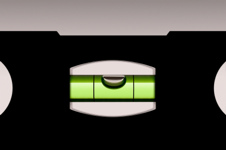The power of the press
Jan 27th 2011 | ORLANDO, FLORIDA | from the print edition

Read complete article clicking here
This is a place for Management and Technology posts. Take part and enjoy it!






 |
Mounted on the roof of a building on NIST’s Gaithersburg, Md., campus, this NIST-developed device is designed to induce temperature-caused strains on sealant specimens while monitoring loads and displacements. Affixed to a rigid base, the top segments of PVC pipe expand and contract with changes in temperature. Sensors, load cells, and specimens--sandwiched between aluminum blocks--are suspended from the top crosspiece, which moves, and are attached to the same rigid base.Credit: NIST |



 Looking for all of the basics about employee management? Employee management is the most important job that managers do in an organization. You'll want to learn how to find, interview, and hire a superior workforce. Then, you need to understand and perform the employee practices that keep employees motivated, inspired, developing, and attaining goals with your guidance. You can be the successful manager who makes a serious difference in the work life of employees and for your organization.
Looking for all of the basics about employee management? Employee management is the most important job that managers do in an organization. You'll want to learn how to find, interview, and hire a superior workforce. Then, you need to understand and perform the employee practices that keep employees motivated, inspired, developing, and attaining goals with your guidance. You can be the successful manager who makes a serious difference in the work life of employees and for your organization.| Introduction |
| The term experiment is defined as the systematic procedure carried out under controlled conditions in order to discover an unknown effect, to test or establish a hypothesis, or to illustrate a known effect1. When analyzing a process, experiments are often used to evaluate which process inputs have a significant impact on the process output, and what the target level of those inputs should be to achieve a desired result (output). Experiments can be designed in many different ways to collect this information. Design of Experiments (DOE) is also referred to as Designed Experiments or Experimental Design - all of the terms have the same meaning. |
| Experimental design can be used at the point of greatest leverage to reduce design costs by speeding up the design process, reducing late engineering design changes, and reducing product material and labor complexity. Designed Experiments are also powerful tools to achieve manufacturing cost savings by minimizing process variation and reducing rework, scrap, and the need for inspection. |
| This Toolbox module includes a general overview of Experimental Design, instructions and templates for conducting simple experiments, and links and other resources to assist you in conducting more complex experiments. A glossary of terms is also available at any time through the Help function, and we recommend that you read through it to familiarize yourself with any unfamiliar terms. continue learning..... |
 Intelligence quotient (IQ) involves a series of tests to predict a person’s intelligence. The tests include a mix of observations, analytical, quantitative and qualitative questions which judge his / her ability to react to situations. And the higher the IQ of a person, the more he / she is regarded as having done something great [...]
Intelligence quotient (IQ) involves a series of tests to predict a person’s intelligence. The tests include a mix of observations, analytical, quantitative and qualitative questions which judge his / her ability to react to situations. And the higher the IQ of a person, the more he / she is regarded as having done something great [...] king, Vision Engineering's Manufacturing Service division (VEMS) has a major resource to benefit customers as it can call upon and specifically tailor the international expertise of the parent company to support projects involving design, development, manufacture and marketing.
king, Vision Engineering's Manufacturing Service division (VEMS) has a major resource to benefit customers as it can call upon and specifically tailor the international expertise of the parent company to support projects involving design, development, manufacture and marketing. es on robot density (number of robots in use per 10,000 persons employed) for all manufacturing sectors excluding automotive, illustrated the poor position of the UK which was at 19% of Germany and only 62% of Spain in 2009. Martin Walder, Chairman of the Engineering and Machinery Alliance (EAMA), commented: "By comparing UK companies with similar businesses in Germany, Spain and Sweden this study highlights our weakness in automation. If UK manufacturing is to remain competitive we have to act now."
es on robot density (number of robots in use per 10,000 persons employed) for all manufacturing sectors excluding automotive, illustrated the poor position of the UK which was at 19% of Germany and only 62% of Spain in 2009. Martin Walder, Chairman of the Engineering and Machinery Alliance (EAMA), commented: "By comparing UK companies with similar businesses in Germany, Spain and Sweden this study highlights our weakness in automation. If UK manufacturing is to remain competitive we have to act now."